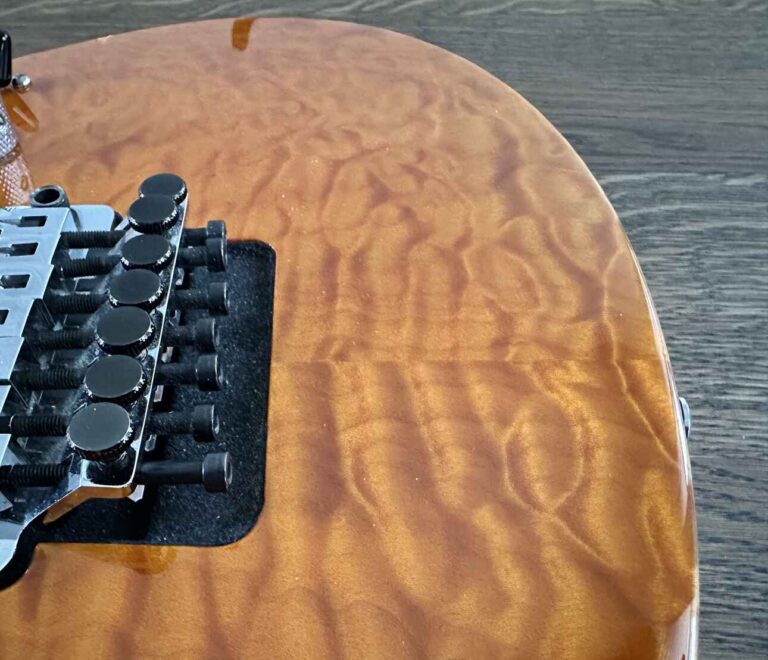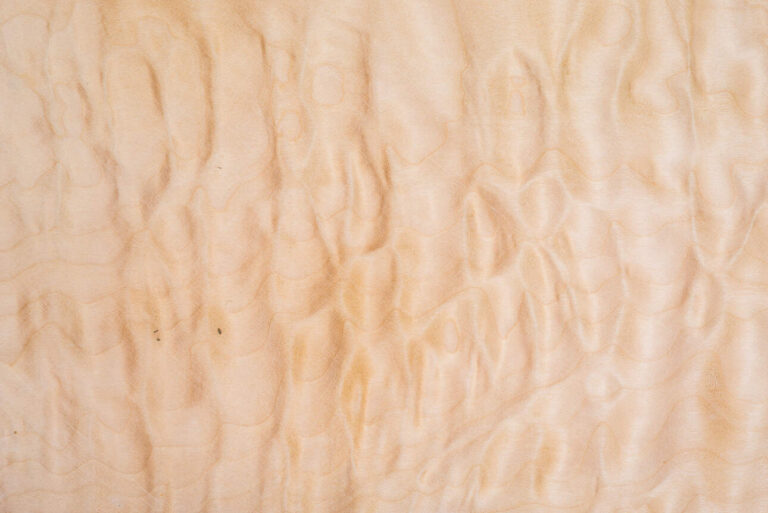What is a Translucent Guitar Finish? Guide to See-Through Styles
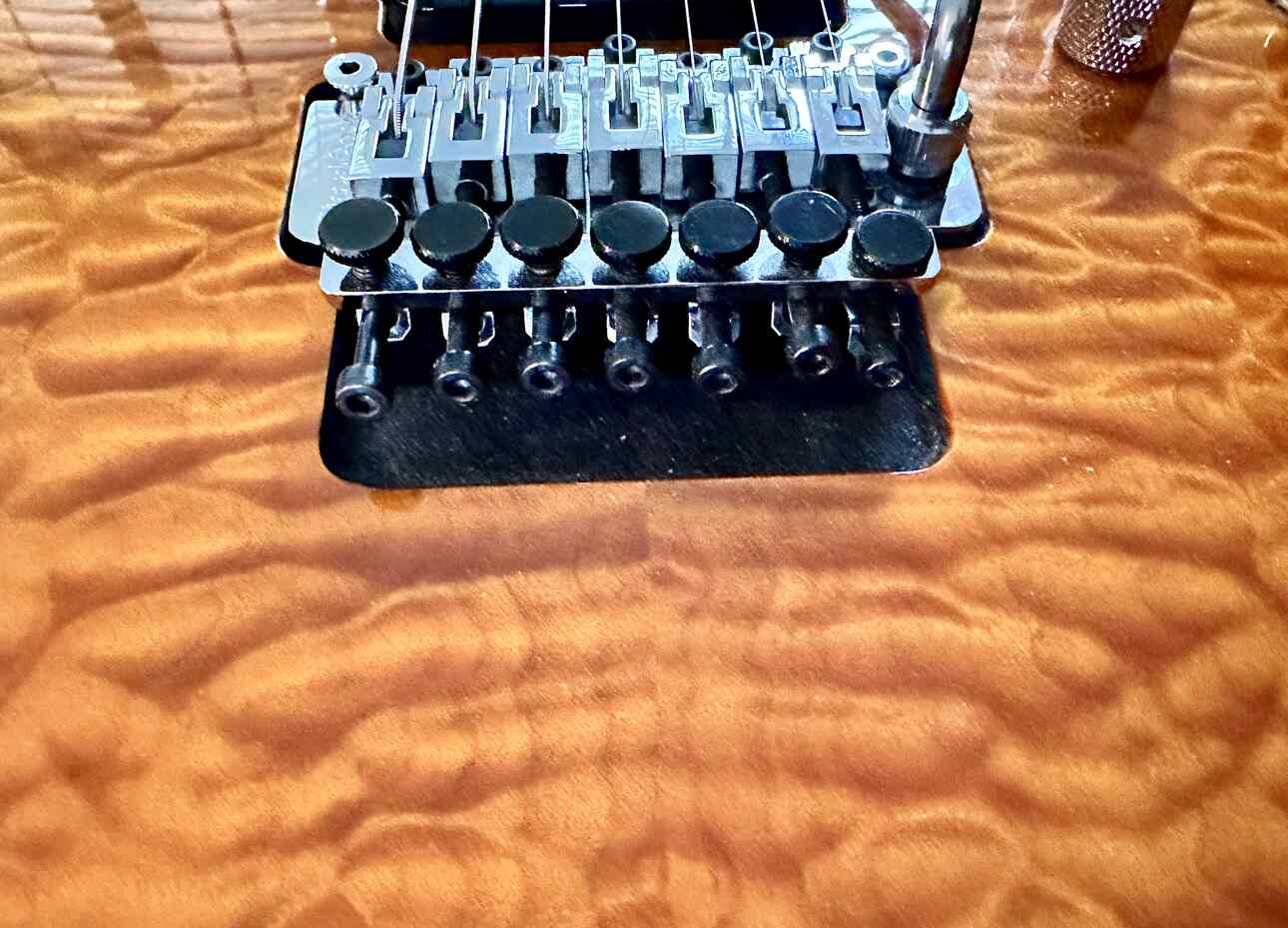
A translucent guitar finish lets you see the wood grain while adding color and protection. It shows off the wood’s beauty and can change the guitar’s tone. You can choose from tinted lacquers, oils, and shellac, each giving a different look and level of protection.
Knowing the pros and cons of translucent finishes can be helpful when customizing or buying a guitar. Especially when you’re working on DIY guitar projects.
These finishes can make a guitar look great and might change its sound. But they might need more care than solid finishes. Many well-known guitars have these finishes, making them stand out and desirable.
Key Takeaways
- Translucent finishes show the wood’s grain and can affect guitar tone;
- These finishes balance visual appeal with variable protection levels;
- Regular maintenance is key for preserving a guitar’s translucent finish.
What Is a Translucent Guitar Finish?
When checking out guitar looks, you’ll find different finish types. A translucent guitar finish lets the natural wood grain shine while offering protection.
Defining Translucent Finishes
Translucent finishes are guitar finishes that let you see the wood grain underneath. Unlike opaque finishes that hide the wood, these finishes show it off.
Often linked with nitrocellulos translucent finishes are loved for their look and how they might affect the guitar’s sound. They’re known for its thin coats and easy application.
If you can see the wood details beneath the shine, that’s a translucent finish.
Types of Translucent Finishes
Nitrocellulose Lacquer
Nitrocellulose lacquer is a classic finish used on guitars since the 1920s. It is known for aging well and developing a unique look over time. Fender often used this finish for its thin but protective layers. It resulted in a sought-after vintage appearance.
Polyester Finishes
Polyester finishes are much thicker than nitrocellulose lacquer, providing a hard, durable layer. They are less likely to check, keeping a like-new look for longer. This robust finish can handle frequent use. Which makes it a favorite for its long-lasting quality.
Urethane Finishes
Urethane finishes offer a balance between the thin nitrocellulose and thick polyester layers. They are flexible and impact-resistant. As a result, they provide strong protection without the bulk. Ideal for maintaining a beautiful guitar body.
Available in various sheens, urethane finishes can be polished to a high gloss. This way, the finish combines durability with visual appeal.
The Role of Finish in Guitar Tone
When you’re exploring guitar finishes, consider how the finish impacts the wood’s resonance. You also want to know how the thickness of the finish shapes the sound quality.
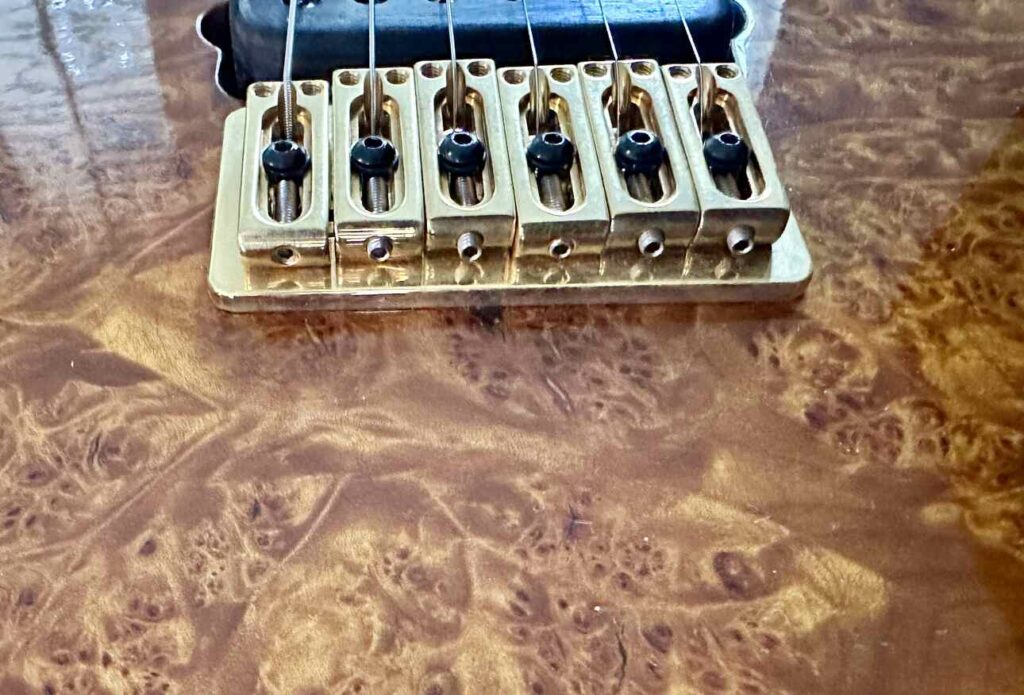
Wood Resonance and Finish
The finish on your guitar does more than look good; it also affects the wood’s natural resonance. A translucent finish shows off the wood grain and usually means a thinner coat. It can let more of the wood’s natural resonance come through in the tone.
A thin finish can help keep the liveliness and warmth of the vibrations while you play.
Finish Thickness and Sound Quality
The thickness of your guitar’s finish can impact its sound. A thicker finish might dampen the resonance and overtones, which changes your instrument’s tone. But a thin finish may allow for a purer tone that better reflects the wood’s natural qualities.
Your guitar’s sound depends on finding the right balance between protection and performance. This balance is directly influenced by the finish.
A thicker finish might dampen the resonance and overtones, which changes your instrument’s tone
What Are the Advantages and Disadvantages of a Translucent Finish
When considering a translucent finish for your guitar, weigh its pros and cons. This finish, often used on guitars with beautiful wood grain, can enhance your guitar’s look.
This is particularly true when applied to a maple neck or guitar body. The wood is known for its intricate and beautiful wood grain.
| Advantages | Disadvantages |
|---|---|
| Aesthetic Appeal: Translucent finishes allow the natural beauty of the wood grain to show through, enhancing the guitar’s visual appeal. | Durability Concerns: They may be less durable compared to some opaque finishes, potentially requiring more maintenance (source). |
| Resonance: These finishes can be thinner, which might allow the wood to resonate more freely, potentially improving the guitar’s tone (source). | Susceptibility to Damage: Translucent finishes can show scratches and dents more easily, making them more susceptible to visible damage (source). |
| Customization: They offer a range of customization options, allowing for various shades and levels of transparency to suit personal preferences. | Complex Application Process: Applying a translucent finish can be more complex and time-consuming, requiring skilled craftsmanship to achieve a flawless result (source). |
| Aging Gracefully: High-quality translucent finishes can age well, maintaining their transparency and enhancing the guitar’s look over time (source). | Tone Impact: Some players believe that certain translucent finishes might impact the guitar’s tone, although this is often subjective (source). |
| Potential Resale Value: Guitars with a good grain pattern and translucent finish can have higher resale values. | Visibility: Any imperfections in the wood are more visible, requiring high-quality wood for the best appearance. |
| Sense of Uniqueness: Each guitar has a unique pattern, making it a one-of-a-kind instrument when paired with a transparent finish. | Maintenance: This type of finish might need more care to maintain its clarity and shine over the years. |
| Color Fading: Over time, some translucent finishes may fade with exposure to sunlight, altering the look of your guitar, and this is particularly true for finishes such as nitro. |
Care and Maintenance of Translucent Finishes
Regular cleaning and attention to temperature changes will help you keep your guitar’s translucent finish looking its best. Proper care can prevent damage and maintain the pristine look and condition of your guitar’s clear coat.
Cleaning and Polishing
After each use, cleaning your guitar with a soft, lint-free cloth can remove fingerprints and light grime. For a translucent finish, use a specialized guitar cleaner compatible with a gloss urethane coat.
When polishing, choose a non-abrasive polish specifically designed for guitars. Apply it sparingly to avoid buildup, which could dull the clear coat.
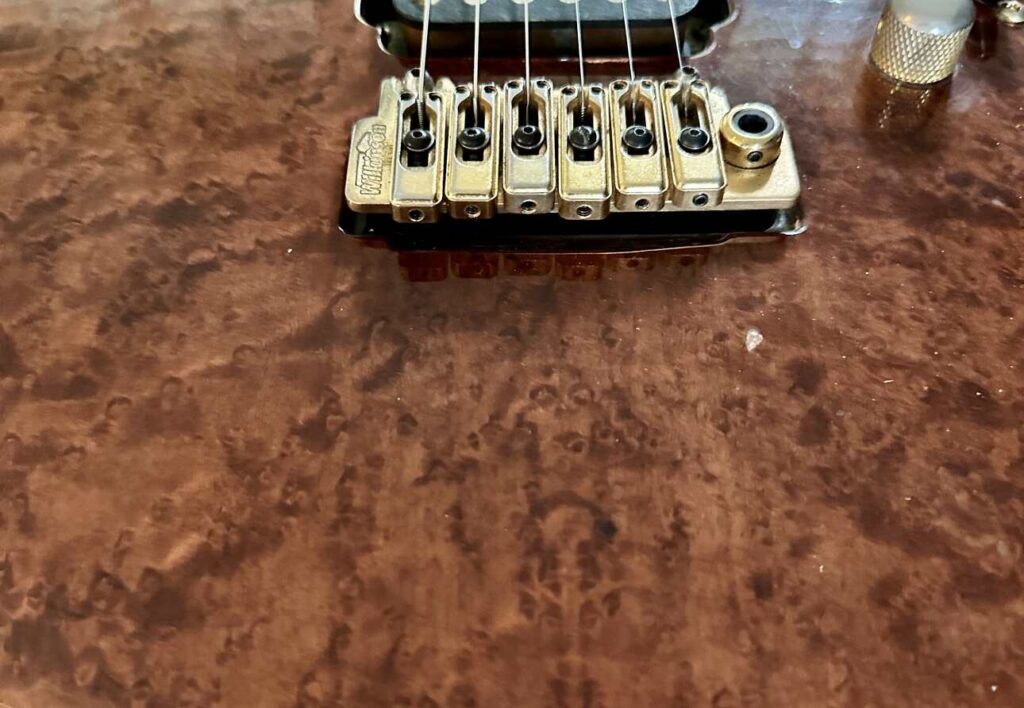
Steps for Polishing Your Translucent Finish:
- Gently wipe off any dust with a soft cloth;
- Apply the polish as directed, using circular motions;
- Buff with a clean cloth until the desired gloss is achieved.
Dealing with Wear and Checking
Checks in the finish can be caused by sudden temperature and humidity changes.
To cut this risk:
- Store your guitar in a consistent, moderate climate;
- Avoid extreme temperatures and direct sunlight;
- If checking occurs, consult a professional for repair, as it can be complex.
Popular Guitars with Translucent Finishes
Fender’s Iconic Models
Fender is well known for using nitrocellulose lacquer. This is a type of translucent finish that ages in its own specific way.
The Fender Stratocaster and Telecaster often feature such finishes. They often showcase a sunburst pattern. It transitions from a darker edge to a lighter center, emphasizing the wood’s natural patterns.
Other Acclaimed Guitar Makers
Beyond Fender, other guitar makers also champion translucent finishes. For example, Gibson’s Les Paul Standard often comes in various sunburst finishes. The ‘Cherry Sunburst’ has been a favorite among guitarists for decades.
Also boutique guitar makers, such as PRS (Paul Reed Smith), offer high-end guitars with beautiful translucent finishes.



